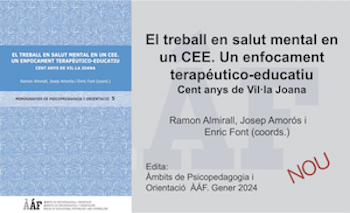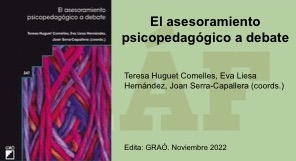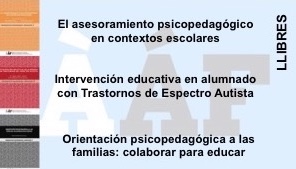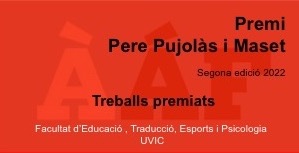Bilingual education and inclusion in compulsory secondary education
DOI:
https://doi.org/10.32093/ambits.vi60504970Keywords:
Inclusion, educational inclusion, bilingual education, , educational programmes, secondary educationAbstract
Bilingual educational programmes are nowadays an important part of the different educational actions proposed and promoted by educational administrations and, therefore, used as tools designed and oriented to introduce aspects of innovation and improvement in the educational system. Implemented and developed widely in the last 20 years, they represent a priority action in the context of decentralized educational policies. From the inclusive perspective, two main currents are observed that lead to differentiated opinions about the contribution or not of this type of actions towards effective inclusive education. This research work with a mixed approach analyses, from an inclusive point of view, the bilingual educational programme in a school during compulsory secondary education levels. The case study relies on two tools: the analysis of the data after applying a questionnaire to teachers who teach or have taught in the programme and the historical statistics associated within the programme's database in the context of the school and the local educational administration. As a result, relevant conclusions and evidence are reflected, as well as interesting aspects of improvement that can be applied both to the programme itself in the context of the case analyzed (school), apart from various recommendations for improving the programme in a global basis.
References
Agudo, MT, González, R., Hill, E., Justo, MA, Kelly, R., Locke, M., Reilly, T. y Medrano, MP (2006). Orientaciones para el desarrollo del currículo integrado hispano-británico en educación primaria. Ministerio de Educación. https://sede.educacion.gob.es/publiventa/PdfServlet?pdf=VP12152.pdf&areaE
Ainscow, M., Booth, T. y Dyson, A. (2006). Improving schools, developing inclusion. Routledge.
Alba-Pastor, C. (2019). Diseño Universal para el Aprendizaje: un modelo teórico-práctico para una educación inclusiva de calidad. Participación educativa, 6(9), 55-66. http://hdl.handle.net/11162/190783
Alderete-Callupe, L. (2022). Los programas educativos y sus logros. Alborada de la Ciencia, 2(2), 27–35. https://doi.org/10.26490/uncp.alboradaciencia.2022.2.1115
Booth, T. y Ainscow, M. (2011). Index for Inclusion: developing learning and participation in schools, (3rd edition). Centre for Studies in Inclusive Education (CSIE).
Coyle, D., Hood, P. y Marsh, D. (2010). CLIL: Content and Language Integrated Learning. Cambridge.
Durán-Martínez, R., Martín-Pastor, E. y Martínez-Abad, F. (2020). ¿Es inclusiva la enseñanza bilingüe? Análisis de la presencia y apoyos en los alumnos con necesidades específicas de apoyo educativo. Bordón, Revista de Pedagogía, 72(2), 65-82. https://doi.org/10.13042/Bordon.2020.71484
Durán-Martínez, R. y Pérez-García, E. (2022). Los ODS en la enseñanza bilingüe desde un planteamiento inclusivo. En C. López-Esteban (Ed.), Los ODS. Avanzando hacia una educación sostenible (pp. 239-249). Ediciones Universidad de Salamanca. https://doi.org/10.14201/0AQ0327
Echeita, G. y Ainscow, M. (2011). La educación inclusiva como derecho: marco de referencia y pautas de acción para el desarrollo de una revolución pendiente. Tejuelo: Revista de Didáctica de la Lengua y la Literatura, 12, 26-46. http://hdl.handle.net/10486/661330
Echeita, G. (2017, 2 de junio). Echeita defiende ante el Congreso una reforma profunda para avanzar hacia la Educación Inclusiva Inclusión y exclusión educativa. Plena Inclusión Madrid. Recuperado el 30 de abril de 2023, https://plenainclusionmadrid.org/sin-categorizar/echeita-defiende-ante-el-congreso-una-reforma-profunda-para-avanzar-hacia-la-educacion-inclusiva/
Falcón, A., Jiménez, A. y Urchaga, J. D. (2019). El programa bilingüe MECD-British Council, más de dos décadas de innovación educativa. Papeles salmantinos de educación, 23, 83-105. https://redined.educacion.gob.es/xmlui/bitstream/handle/11162/216260/Falc%c3%b3n.pdf?sequence=1&isAllowed=y
Ferrer Esteban, G. (2015). Quines estratègies d’agrupament milloren els resultats de l’alumnat? Presentació, Fundació G. Agnelli i del Grup Interdisciplinar de Polítiques Educatives (UB).
Gortazar, L. y Taberner, PA (2020). La Incidencia del Programa Bilingüe en la Segregación Escolar por Origen Socioeconómico en la Comunidad Autónoma de Madrid: Evidencia a partir de PISA. REICE. Revista Iberoamericana Sobre Calidad, Eficacia Y Cambio En Educación, 18(4), 219–239.https://doi.org/10.15366/reice2020.18.4.009
Hamers, JF, and Blanc, MHA (2000). Bilinguality and Bilingualism (2nd Edition). Cambridge University Press.
Lázaro, A. (2007). Enseñanza de la lectura a través de phonics en el aula de Lengua Extranjera en Educación Primaria. Porta Linguarum, 8, 153-167.https://digibug.ugr.es/handle/10481/31625
Lorenzo, F. y Rodríguez, L. (2014). Onset and expansion of L2 cognitive academic language proficiency in bilingual settings: CALP in CLIL. System, 47, 64-72. https://doi.org/10.1016/j.system.2014.09.016
Marsh, D. (1994). Bilingual Education & Content and Language Integrated Learning. International Association for Cross-cultural Communication, Language Teaching in the Member States of the European Union. Lingua, University of Sorbonne.
Martín-Pastor, E. y Durán, R. (2019). La inclusión educativa en los programas bilingües de educación primaria: un análisis documental. Revista Complutense de educación, 30 (2), 589-604. http://dx.doi.org/10.5209/RCED.57871
Ministerio de Educación y Formación Profesional (s.d.). Web oficial del Programa Educativo Bilingüe (PEB). https://www.educacionyfp.gob.es/mc/british-council/programa.html
Murillo, F., Almazán, A y Martínez-Garrido, C. (2020). La elección de centro educativo en un sistema de cuasi-mercado escolar mediado por el programa de bilingüismo. Revista Complutense de educación, 32 (1), 88-97. https://doi.org/10.5209/rced.68068
Onrubia, J. (2010). La atención a la diversidad en la educación secundaria. En C. Coll (Coord.), Desarrollo, aprendizaje y enseñanza en la educación secundaria (pp. 173-89). Graó.
Pegalajar Palomino, MC y Colmenero Ruiz, MJ (2017). Actitudes y formación docente hacia la inclusión en Educación Secundaria Obligatoria. Revista electrónica de investigación educativa, 19(1), 84-97. https://doi.org/10.24320/redie.2017.19.1.765
Porto, M., Bolarín, MJ y Lova, M. (2020). Programas bilingües en centros de Educación Primaria, ¿qué dicen los docentes implicados en su desarrollo? Educatio Siglo XXI, 38(3), 339-362. http://dx.doi.org/10.6018/educatio.452951
Rosales-Marín, C. (2015). Cómo transformar el aula de integración en aula de inclusión. Revista Internacional de apoyo a la inclusión, logopedia, sociedad y multiculturalidad, 1(2). 14-24.http://www.redalyc.org/articulo.oa?id=574661395005
Santos-Menezes, E. y Juan-Garau, M. (2013). Análisis de la relación entre el modelo formativo de aprendizaje del inglés AICLE y Enseñanza Formal y la ansiedad. Revista española de lingüística aplicada, 26, 457-474. https://dialnet.unirioja.es/servlet/articulo?codigo=4597695
Sapon-Shevin, M. (2013). La inclusión real: Una perspectiva de justicia social. Revista de Investigación en Educación, 3 (11), 71-85. http://webs.uvigo.es/reined/
Siepmann, P. y Pérez-Cañado, ML (2020). Catering to Diversity in CLIL. Anglistik, 33(1), 203-222. https://doi.org/10.33675/ANGL/2022/1/16

Downloads
Published
Issue
Section
License
Copyright (c) 2024 Daniel Salcedo-López

This work is licensed under a Creative Commons Attribution-NonCommercial-NoDerivatives 4.0 International License.
The authors maintain their copyright and give the right to the first publication of the work to the journal, registered under a Creative Commons Attribution-Non Commercial-NoDerivs license. This license allows others to download the works and to share them with others as long as they credit the author, but it does not allow for any kind of modification or commercial use.














